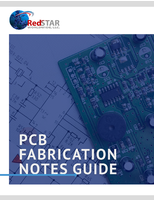Oscillator Buffers minimize jitter and power consumption.
Share:
Press Release Summary:

Measuring 2 x 2 x 0.55 mm, Series SN65LVDS16/17/18/19 and SN65LVP16/17/18/19 are high-frequency oscillator gain stage buffers supporting LVDS and LVPECL on high gain outputs in 3.3 or 2.5 V systems. Model LVDS/LVP16 and LVDS/LVP17 offer 2 Gbps rise time, clock rates of 2 GHz, and 0.11 ps intrinsic phase jitter. Models LVDS/LVP18 and LVDS/LVP19 feature 1 Gbps rise time, 1 GHz clock rate, and 0.12 ps intrinsic phase jitter. Buffers are suited for communication applications.
Original Press Release:
TI Introduces Industry's Smallest LVPECL/LVDS Oscillator Buffers
Devices Combine Low Jitter and Power with High Speed
DALLAS (March 3, 2005) - Texas Instruments Incorporated (TI) (NYSE: TXN) today introduced eight new high gain output oscillator buffers. Measuring just 2 x 2 x 0.55 mm, the new oscillator products enable designers to save space while also minimizing jitter and power consumption. The devices provide differential signal output in low-voltage differential signaling (LVDS) or low-voltage pseudo emitter-coupled logic (LVPECL) and clock signal amplification for telecommunications switching equipment. (See www.ti.com/sc05057.)
The SN65LVDS16/17/18/19 and SN65LVP16/17/18/19 are high-frequency oscillator gain stage buffers supporting LVDS and LVPECL on the high gain outputs in 3.3-V or 2.5-V systems. The devices afford oscillator designers their choice of rise times: 2 Gbps (LVDS/LVP16 and LVDS/LVP17) and 1 Gbps (LVDS/LVP18 and LVDS/LVP 19). In addition, the family provides the option of both single-ended input on the LVDS/LVP16 and LVDS/LVP18 and fully differential inputs on the LVDS/LVP17 and LVDS/LVP19. The LVDS/LVP16 and LVDS/LVP18 provide three gain control options from 300 mV to 860 mV, allowing the designer to optimize the buffer based on system needs.
The new devices offer 3.3-V and 2.5-V operation, enabling designers to migrate seamlessly to 2.5-V supply as system needs dictate. Each device offers power savings when compared to the nearest competition, with power reductions ranging from 15 percent to 66 percent. For example, the LVP18/19 each uses only 50 mW, about one-third the power consumption of comparable devices.
The new devices join other TI oscillator products such as the CDCM1802/04. These mixed-output low-voltage PECL and low-voltage transistor-to-transistor (LVTTL) devices provide timing module and voltage-controlled crystal oscillator designers integrated low-voltage PECL and LVTTL outputs in a 3 x 3 mm and 4 x 4 mm package, respectively. This is especially useful for designers who need a LVTTL feedback in their PLL module design. The buffers also include multiple divider options, which are chosen through external select pins. The devices are well-suited for communications applications. For more information about TI's complete portfolio of DSP and analog products that enable engineers to speed design of their wired and wireless communications equipment, please see the Communications Solutions Guide at www.ti.com/sc05057b.
Key Features
o Low-Voltage PECL input and Low-Voltage PECL or LVDS outputs
o Clock rates to 2 GHz (LVDS/LVP16 and LVDS/LVP17)
- 140-ps output transition times
- 0.11-ps typical intrinsic phase jitter
- Less than 630-ps propagation delay times
o Clock Rates to 1 GHz (LVDS/LVP18 and LVDS/LVP19)
- 250-ps output transition times
- 0.12-ps typical intrinsic phase jitter
- Less than 30-ps propagation delay times
o 2.5-V or 3.3-V supply operation
Availability, Pricing and Support
The SN65LVDS16/17/18/19 and SN65LVP16/17/18/19 are available in volume from TI and its authorized distributors, packaged in an eight-pin, 2 x 2 x 0.55 mm Lead (Pb)-Free small-outline no-lead package. Suggested resale pricing in 1,000-piece quantities is $2.55 each for the LVDS16/17/18/19 and $1.95 for the LVP16/17/18/19.
Samples are available for 24-hour delivery.
Texas Instruments Incorporated provides innovative DSP and analog technologies to meet our customers' real world signal processing requirements. In addition to Semiconductor, the company's businesses include Sensors & Controls, and Educational & Productivity Solutions.
TI is headquartered in Dallas, Texas, and has manufacturing, design or sales operations in more than 25 countries. More information is located on the World Wide Web at www.ti.com.




